Two pilot whales beached on Tristan
Two pilot whales found on 16th October 2022
Photographs and reports by Jason Ivory, James Glass, Shirley Squibb and Emil Pirzenthal
Sunday 16th October 2022 was a beautful day so many islanders were out and about. During the day two long-finned pilot whales (Globicephhala melas) were found beached west of Calshot Harbour towards Hottentot Point. These majestic animals are in fact large black dolphins, uncommon in Tristan waters and this is the first known record of them being found beached on the island.
The photographs below record better than words the sorry scenes that were viewed.
Below we detail more information about the species.
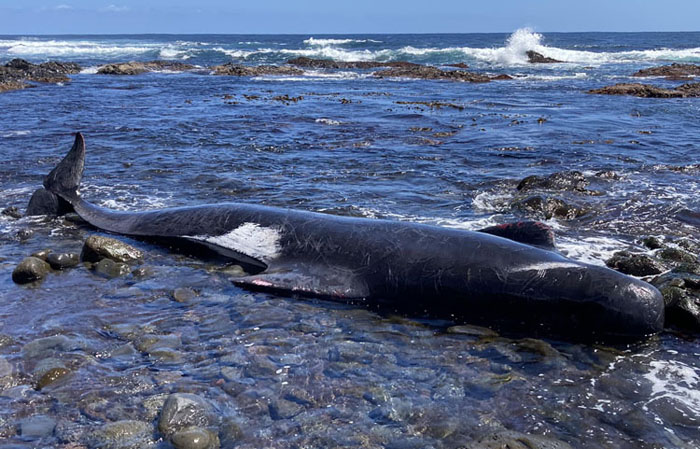
Photos 1 and 2:
The first two images show the first pilot whale to be discovered beached near Hottentot Point. It was a male,
that was found alive, but struggling. It died later and was lying on his right side head pointing east.
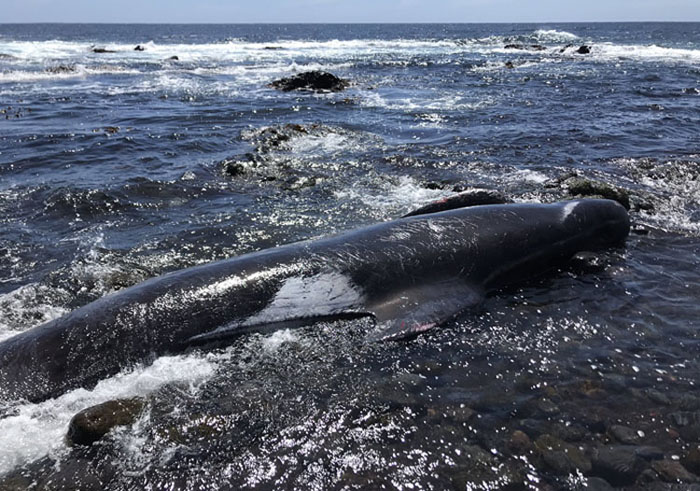
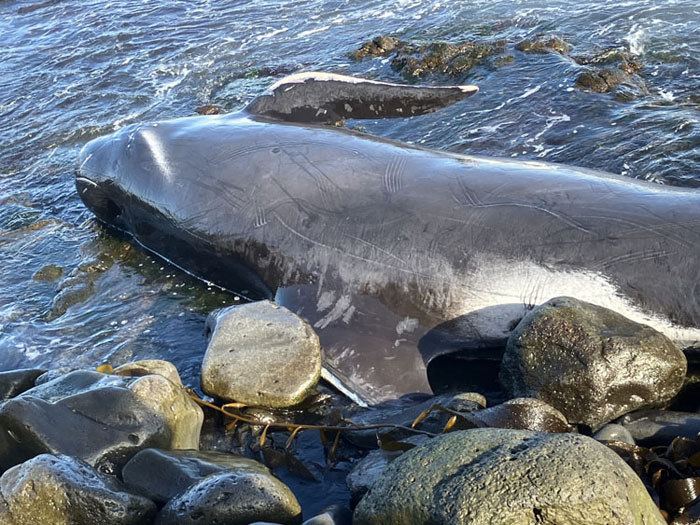
Photo 3: Close up view of the second pilot whale found later. It was a female and was found dead.
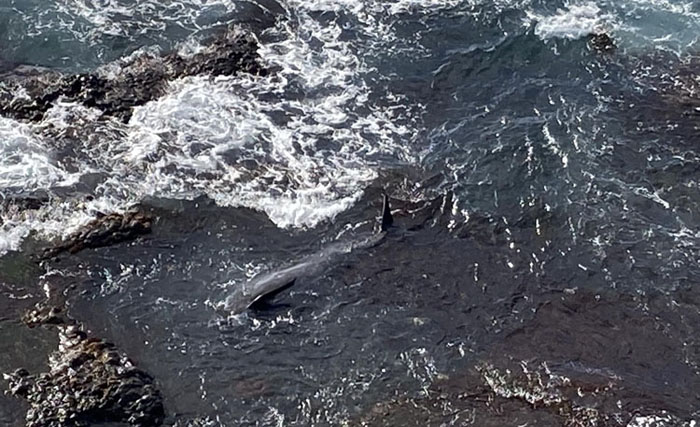
Photos 4 and 5: Two similar views, taken from the top of the cliff above, of the second female pilot whale
which was found alive but struggling in a rock pool some 200m east of the first animal, west of Calshot Harbour.
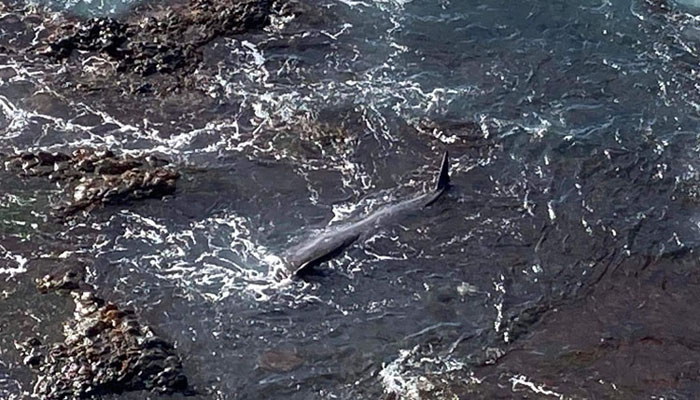
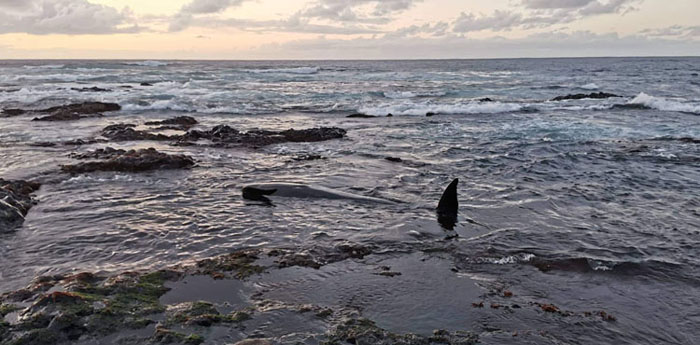
Photo 6: Another view of the female pilot whale taken later from the beach.
About Long-finned pilot whales (Globicephhala melas)
From The Field Guide to the Animals and Plants of Tristan da Cunha Edited by Peter Ryan
Long-finned pilot whales are large black dolphins with a distictively broad-based dorsal fin. Mature animals range from 4-7 metres in length with males larger, but outnumbered by females. They are gregarious and commonly occur in pods of 10-100 animals.
They dive, often at night, to depths of up to 600m, but more commonly 200m, for between 10-15 minutes to feed on squid and fish.
Females have a gestation period of between 12-18 months and calve every 3-6 years, suckling their young for up to three years.
From https://uk.whales.org/
Long-finned pilot whales do indeed have very long flippers! However, the 'pilot' part of their name comes from an old theory that each pod is piloted by a single leader. It is now known this is not the case, but the name has stuck.
The total worldwide population size may number several hundred thousand whales and the IUCN conservation status is of Least Concern.
Long-finned pilot whales live throughout the cold and temperate waters of the southern hemisphere and in the North Atlantic Ocean; they have a wide distribution around the globe. They prefer deep offshore environments but do occur in coastal waters in some areas. Long-finned pilot whales are generally nomadic, although some populations are resident all year round in the same location. Their movements are principally dictated by sources of food in the ocean – they move around searching for good supplies of squid.
